
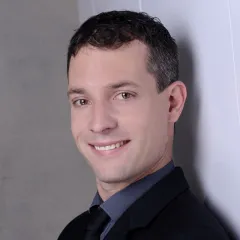
Biography:
In his current role, Colin Schwarz provides simulation-based risk assessment on narrow banded machinery noise with a strong focus on gearbox tonality. Together with colleagues, Colin sets up and validates processes based on multibody simulation, which supports such an assessment. Before joining GE Renewable Energies, Colin spent almost five years on the Simpack team of Dassault Systèmes and covered topics like customer and project support, training, and product management. In parallel, Colin has been working on sophisticated wind turbine controllers, also called model predictive control. Besides real-time capabilities to provide a feasible control signal in time, topics like the controller impact on the drive train fatigue strength need to be adequately addressed.
Title: Simulation-Based Wind Turbine Gearbox Tonality Analysis and Risk Assessment
Abstract:
The noise emission of wind turbines and farms can be an important and limiting factor for the acceptance and thus further growth of wind energy. Next to the overall noise emission level, tonal noise from machinery and drivetrain components can be disturbing contributions.
This presentation discusses the modeling of tonal noise contributions that are originated by gearbox teeth meshing, transmitted through complex, structure-borne transfer paths into the machine head, and radiated by tower and blade surfaces. A seamless tool chain of multibody simulation and boundary element method to solve the wave equation is a core feature to integrate such an approach for risk assessment and analysis into established design processes. Its reliability and uncertainty need to be understood very well to drive design decisions early in the design phases.
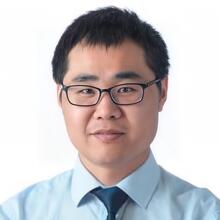

Biography:
Zhiliang Xu is a Chief Dynamics Analysis Engineer at Goldwind Science Technology.
In the 10 years, he has mainly engaged in wind turbine dynamics simulation analysis, vibration stability evaluation, FEA, MDO, verification & validation.
Title: Wind Turbine MBS Simulations with Simpack
Abstract:
Firstly, the Software Architecture Diagram of Simpack will be introduced, then the applications of MBS simulations in wind turbines system and sub-system.
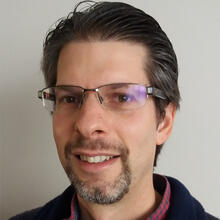
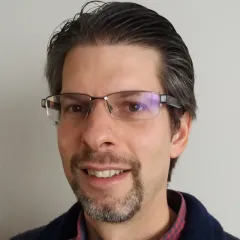
Biography:
Benjamin Marrant graduated as an aerospace engineer at Delft University of Technology in 2001. He worked as an associate researcher at Delft University of Technology in research projects related to the aeroelasticity of wind turbines until 2007. After that, Ben started in the Technology Division of Hansen Transmission, which ZF later acquired. In this division, he mainly worked in the area of NVH of multi-megawatt wind turbine gearboxes and drivetrains.
Title: An Automated Simulation Approach of Drivetrains towards Tonality Free Wind Turbines
Abstract:
As onshore wind turbines are installed closer and closer to urbanized areas, wind turbine OEMs are being faced with increasingly stringent noise regulations. Compliance with these noise regulations, combined with torque density increase measures, increasing power levels of onshore wind turbines, and shorter design cycles translate into ever-increasing design challenges for gearbox suppliers. As the major design levers with respect to NVH are being decided upon in the concept phase where not all design inputs are fixed it is key to be able to compare different concepts, gear designs, etc., and the interaction with the system level in a quick and easy way. This requires an all-in-one simulation approach, involving a.o. transfer path predictions with Simpack, which is able to predict the NVH risks for the different design options available. Therefore, ZF developed an integrated simulation platform that combines the different aspects of predicting wind turbine tonality. This enables ZF to develop NVH risk mitigation strategies pro-actively in an early phase of the design leading to less expensive and better integrated solutions.
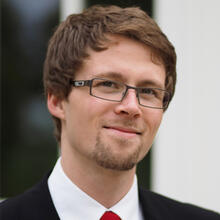

Biography:
Benedikt Michels has joined the DLR Institute for Flight Systems in 2016 as research assistant, after having obtained a Bachelor's degree in Mechanical Engineering and a Master's degree in Aerospace Engineering from the Technical University Braunschweig.
He has since been working on downwash models in the wind energy and helicopter research field and the VAST (and predecessor tools) development in general.
Since 2022, Benedikt leads the DLR-internal project "LAISA", which aims to develop more holistic simulation capabilities for wind farm aerodynamics and aeroacoustics on the one hand, and a more integrated design process for load adaptive rotor blades on the other hand.
Title: VAST as Simpack User Routine for Wind Turbine Aerodynamics
Abstract:
The presentation gives a first overview of the emerging wind turbine simulation capabilities at the Institute of Flight Systems of the German Aerospace Center (DLR), using the multi-body system simulation tool Simpack combined with the in-house developed modular aeromechanics code VAST (versatile aeromechanics simulation tool).
Current activities focus on verification and validation, using a 2.3 MW NM80 wind turbine model from the DAN-AERO experiment.
The Simpack model of the turbine is set up by the DLR Institute of Aeroelasticity, using a python-written conversion suite to transfer the data provided in HAWC2 format into input for the Simpack Rotorblade Generator for the blades and directly create Simpack models for the other components, respectively.
To have at hand a more easily modifiable aerodynamic module in addition to the Simpack built-in FAST-AeroDyn, VAST is extended for wind turbine simulations. The coupling of VAST to Simpack via user-routine has already been developed in a previous joint project in the helicopter research field between DLR-FT and Dassault Systèmes (VaMeSH).
Currently, VAST provides a blade element momentum theory (BEMT) and a free vortex-wake inflow model, both in combination with lookup table airfoil polars. Furthermore, a blade geometry model allows for freely configurable blade shapes. Other wind turbine-specific models cover the tower dam effect or the application of wind fields.
Initial simulations comparing the results with AeroDyn reference calculations have been carried out, showing very good agreement.
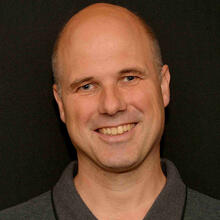

Biography:
Lars Pilgaard MIKKELSEN has for the last 10 years been an Associate Professor in the Department of Wind Energy at the Technical University of Denmark. His work includes both teaching and research in the field of wind turbine blade materials. The research work Lars has been conducting over the last decade focuses on understanding mechanisms controlling the manufacturing, mechanical properties, and failure of the load-carrying laminates inside the wind turbine blades. A topic involving the use of Abaqus together with user-defined subroutines and advanced characterization technics such as fatigue testing and 3D x-ray tomography. The tomography, together with an advanced segmentation algorithm, aims to achieve precise numerical representations of the actual composite materials used in wind turbine blades. Lars joined the SIMULIA Champion program in 2020.
Title: Modeling Composites aimed for Large Wind Turbine Blades
Abstract:
Large wind turbine blades rely on composite materials with excellent and predictable material performance. This presentation demonstrates different cases for modeling composites aiming at the wind turbine blade application. The demonstration will be given using the commercial finite element code Abaqus. The demonstration will cover the ability to model the actual fiber, bundle, and fabric architecture as well as the matrix material performance of specific composite samples. It will be demonstrated how a precise numerical representation of a full cross-section of a material test sample containing 100.000’s of fibers is translated from full 3D x-ray CT scans to high fidelity finite element models. Some of this work includes a Fortran-based implementation of user-defined user-element and user-materials, as well as material orientation mapping.


Biography:
Per LINDSTRÖM LUSSI, is a Sámi Mariner (Marine & Welding Engineer) graduated with a Ph.D. in Production Technology (2015) from University West in Trollhättan, Sweden; a Licentiate of Naval Architecture and Ocean Engineering (2005) from Chalmers University and a B.Sc. in Marine Engineering (1991) from Linnaeus University.
Since his completed active sea service as Chief Engineer Officer in the Swedish Merchant Navy, Per Lindström has concentrated his professional career on specialty welding operations in the field of marine structures, nuclear reactors, boilers, and pressurized equipment. Since March 1, 2017, he has been a Senior Lecturer in Marine Technology at Linnaeus University.
Per Lindström is steering committee member of Linnaeus Knowledge Environment: Advanced materials; chairman of the Swedish Welding Commission's workgroup AG41 'Welding metallurgy and Fracture avoidance'; and since 2005, Sweden's delegate to the IIW working unit C -X 'Structural performances of welded joints — Fracture avoidance'.
Title: Fossil Free High Strength Steel Wind Turbine Blades — Concept Feasibility Study
Abstract:
There is a need for environmentally friendly and recyclable light-weight wind turbine blades. Light-weight wind turbine blades are currently constructed in Glass Fiber-reinforced Plastics (GRP), and Carbon Fibre reinforced Plastic (CRP) composite materials. Combinations that don’t decompose into nontoxic organic materials and/or minerals during the foreseeable future when buried, therefore, creating a substantial negative impact on the environment.
In Europe, by 2023, ca. 14 000 wind turbine blades from first-generation wind turbine farms will be decommissioned. Due to financial aspects, the recycling of GRP and CRP are believed to be performed by the large landfills. With increasing wind power farms, the number of GRP and CRP wind turbine blade landfills will also increase.
Therefore, Linnaeus University Welding Mechanics Laboratory, LNU WML, in Växjö, Sweden, is performing a feasibility study of a novel fossil-free high strength steel wind turbine blade concept. This study explores the possibilities of SSAB Strenx and SANDVIK steel grades by the well-established scientific engineering method ‘Systems Engineering’ and the Dassault Systèmes Finite Element Analyses (FEA) solver Abaqus in combination with its optimization software Tosca.
All in all, for the sake of manufacturing wind turbine blades by:
I. Recyclable material
II. Reduced cost by about 50% compared to GRP and/or CRP
III. Less negative environmental impact compared to GRP and/or CRP
Preliminary results indicate more than 10% blade weight reduction by using Swedish fossil free high strength steel instead of GRP and/or CRP.

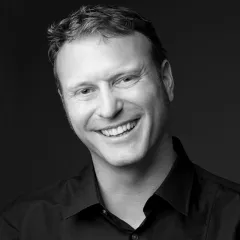
Biography:
Jochen HARMS finished his study of mechanical engineering at the Technical University of Hannover, Germany, in 2001 with the degree of Diplom-Ingenieur.
Starting his career as a consultant at BMW in Munich, Jochen worked for six years in the virtual design of acoustic and driving comfort, performing FEM and multi-body simulations of the drivetrain and complete vehicle.
Moving to Hamburg in 2008, Jochen worked for the next five years as a System Simulation Engineer at the wind turbine manufacturer PowerWind. He was responsible for load calculations and wind turbine system simulations.
During 2012, working as a project engineer for the SIMPACK AG near Munich, Jochen developed a wind turbine load calculation tool for Simpack.
In 2013 Jochen started his own freelance business, founding elb|sim|engineering, offering engineering services in the development of wind turbines. The development projects focus on the multi-body simulation with Simpack, the load calculation of wind turbines, and the programming of simulation tools and processes.
Title: Load Calculations with Simpack and Integration into Company-specific Workflows
Simulation of a Self-Positioning Blade Installation Tool
Abstract:
The development processes for wind turbines are subject to constant optimization and improvement, especially in view of ongoing market pressure.
Many manufacturers are now replacing their conventional load calculation software with more powerful and sophisticated simulation tools to achieve higher optimization levels. As a result, the multi-body system simulation software Simpack is becoming a primary focus of OEMs and suppliers.
The first part of the presentation describes how a load calculation process with Simpack can be developed and easily integrated into already existing company-specific workflows.
Recently, a device has been used for blade assembly that can hold and position the rotor blade independently and stably without the support of taglines. Especially on construction sites where space is limited, this leads to a significantly easier and faster assembly of the rotor blades.
For new and larger blade designs, the question arises in advance for which wind conditions the device can still hold the rotor blade in a stable position.
The model setup, simulations, definition of load cases, and the result postprocessing will be shown to answer this question.
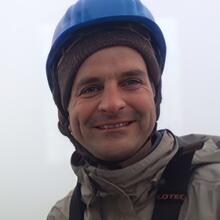
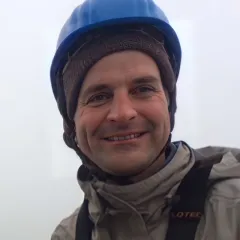
Steve MULSKI is a SIMULIA Industry Process Expert - Wind Energy Executive at Dassault Systèmes. Steve holds a Master of Science in Design and Manufacture. Previously he worked for SIMPACK as Hard of Sales and Marketing and Head of Wind Energy Solutions. Simpack was acquired by Dassault Systèmes in 2014.


Biography:
Stefan HAUPTMANN graduated from the University of Stuttgart in 2006 with a degree in Aerospace Engineering. During his diploma thesis, Stefan developed the coupling of the wind energy aerodynamics module AeroDyn to Simpack.
Afterward, Stefan did research for another six years at the University of Stuttgart in the field of aeroelasticity of wind turbines, also using the software Simpack. In 2013, he joined MesH Engineering GmbH, where he leads the Wind Energy department, solving tasks for various customers in structural dynamics, aerodynamics, and the aeroelasticity of wind turbines and their drive trains.
Title: A Simpack-Based Digital Twin of Wind Turbine Drivetrains and its Applications
Abstract:
Since the beginning of 2021, the e-Twins joint project, which is co-funded by the German government, has been researching the benefits of holistic digital twin technology for the energy system. The energy system is considered at different levels: Grid level, plant level, system level, and component level. For these studied levels, different approaches have been developed to digitally represent the corresponding physical assets in a series of scenarios. These digital twins can be based on analytical approaches or reduced-order models (ROM) using machine learning methods.
As part of the energy system at the component level, wind turbine drivetrains are also described as digital twins. In addition to the methods described above, multibody systems can also be used to develop such a digital twin. This can be used as a virtual sensor to provide insight into the internal state of the powertrain, but its use within model predictive control will also be discussed.
The presentation will cover the various ways to develop a digital twin, focusing on wind turbine drivetrains and the realized representation through a multibody system model. The digital twin will then be shown in a multi-level scenario that also includes a newly developed software platform for visualizing the current state of the power system.
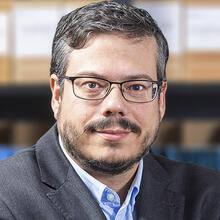
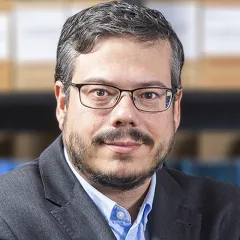
Biography:
Javier RODRIGUEZ has a Ph.D. in Civil Engineering and one degree in Mathematics. He joined the Spanish firm Principia in 2003, where he has worked in the numerical solution of many types of mechanical and structural problems. Javier is the Technical Manager of the company, analyzing the problem, the results obtained from the simulations, and the conclusions reached.
Title: Cracking Problems in Wind Turbines
Abstract:
By their very nature, wind turbines are subjected to many variable and cyclic loads, and, consequently, they are prone to experiencing fatigue cracking problems in various parts of the turbine. Examples include the aluminium rings (alurings) of the blades of several commercial wind turbines, the gears of the yaw control mechanism, and even the main rack supporting all the equipment.
Principia has used numerical simulation with Abaqus and fe-safe to study the origin of many of those cracks, determine their ability to propagate, and analyze the merits of various strategies proposed to solve existing problems or prevent their future occurrence. Among the technologies involved, besides local stress and strain fatigue initiation criteria, are critical distance methods and crack representations based on the extended finite element method (XFEM) to assess the growth behavior.
The communication mainly concentrates on two of the cases studied: the alurings and the yaw drive gears. It describes the methodology used for analyzing the problem, the results obtained from the simulations, and the conclusions reached.
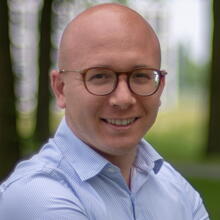
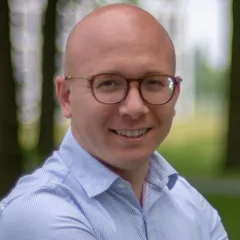
Biography:
Francesco AVALLONE is Assistant Professor at the AWEP Department, Wind Energy Section, at Delft University of Technology. He received both his MSc and PhD degrees from the University of Naples Federico II. In 2015, Francesco joined Delft University of Technology as PostDoc in Aeroacoustics. During this period, he worked on turbulent boundary layer trailing edge noise mitigation with innovative trailing edge serrations. Since July 2017, Francesco is Assistant Professor. His research interests are airfoil self-noise, acoustic liners and jet installation noise. For his research, he uses both experimental and computational techniques.
Title: Aerodynamics and Aeroacoustics of Duct Wind Turbines for Urban Environments
Abstract:
Ducted Wind Turbines are a potential technological solution to increase wind energy production in urban environment, where the presence of buildings disturbs the flow uniformity resulting in lower wind speed with larger turbulent fluctuations. Since they are installed close to urban areas, they are subject to noise regulations, then an aeroacoustics study is necessary.
In this presentation, the aerodynamic and the aeroacoustics fields of Ducted Wind Turbines with different duct geometries and operating under different inflow conditions and angles of attack are investigated using the PowerFLOW solver.
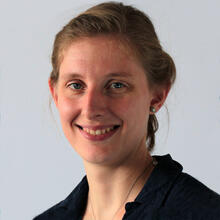
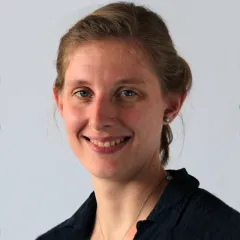
Biography:
Fiona LÜDECKE is an engineer for renewable energy systems and is currently working as a researcher at the Stuttgart Wind Energy Department of the University of Stuttgart.
With her Ph.D. research, she focuses on electro-mechanical interactions in wind turbines using Simpack.
Furthermore, Fiona works on the WINSENT project. The project aims to build two research wind turbines in the complex terrain of the Swabian Alps, where Fiona is responsible for the set-up and validation of the models of the turbines in FAST and Simpack.
Title: Using Simpack User Routines for Electro-Mechanical Co-Simulations
Abstract:
The nominal power of newly installed wind turbines increases steadily in wind energy.
Current publicly known industry developments are aiming for 14 MW. Such concepts are intended for offshore applications, where any component with intense maintenance needs must be avoided. Therefore, most of these concepts use direct-drive configurations. Direct-drive generators with such nominal power are huge, leading to heavy assemblies.
Research now investigates the mass reduction potentials by reducing passive material in generators. This may lead to changes in structural behaviour and system stiffness.
In standard generator constructions, the generators from a wind turbine perspective are assumed to be rigid assemblies with no rotor eccentricity. Therefore, the influences of the electromagnetic field on other turbine components are neglected. This assumption needs to be cross-checked for the ongoing research. This can only be achieved with strongly coupled co-simulation of the electromagnetic field and the mechanical system.
Therefore, this presentation introduces a newly developed software coupling of Simpack and COMSOL Multiphysics using the Simpack User Routines.
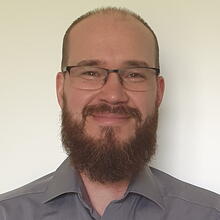
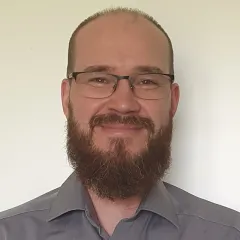
Axel joined Simpack AG as a project engineer for multibody real-time simulation and combustion engine simulations in 2005 after graduating with a diploma in applied mathematics at the Friedrich-Alexander University in Erlangen, Germany. After engaging on several projects in the area of multibody system simulation he took over product management responsibility first for Simpack combustion engine applications and later for the complete Simpack standalone product.
Today he is the responsible product manager for integration of Simpack solver technology into the 3DEXPERIENCE platform through integrated native motion apps.
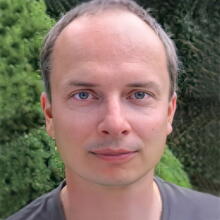
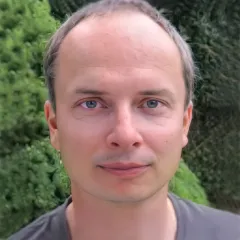
Biography:
After studying Mechanical Engineering at the Technical University Prag, Czech Republic, Jan ZEMAN completed his diploma thesis at Skoda-Auto, using the Multi-Body System (MBS) simulation software Simpack.
In 1999, Jan started working for the SIMPACK AG as a Project and Support Engineer, focusing on the simulation of Vehicle Dynamics (application areas: handling, ride, driveability, durability, NVH). From 2009 to 2014, as the “Product & Project Manager Simpack Automotive”, he was responsible for the Automotive product, customer project, and account management.
Following the acquisition of the SIMPACK AG by Dassault Systèmes in 2014, Jan is now focusing on the SIMULIA MBS/Simpack pre-sales management and strategic key customer engagements in his current role as SIMULIA Multibody Simulation Industry Process Expert Director.
Title: R&D Update on Multibody System Simulation
Abstract:
This presentation will give you an overview of the general R&D updates of the multibody system simulation software Simpack.
We will show you the latest software updates in Simpack, including a few of the updates from the last two years. Further, we will provide an update about application-specific functionalities.
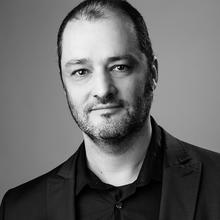

Biography:
Stefan DIETZ’s mission is to explore and make available new multi-scale physics for structures and motion simulation, to maintain and expand existing technology. Stefan leads the team flex body analysis, which contributes to the Abaqus and the Simpack solver.
Before the acquisition of Simpack AG by Dassault Systèmes Stefan was responsible for product management, customer support, and training for flexible bodies in the multibody system code Simpack. Stefan received a Ph.D. in 1999 in aerospace engineering.
Title: Structural Models for Wind Turbine Design
Abstract:
In contrast to high-resolution finite element methods, a strength of multibody system models is the description of the complex mechanical systems with a comparatively small number of degrees of freedom, which leads to a low computational effort. This is necessary for the analyses of multiple design variants. Different levels of modelling fidelity enable the optimum balance between computation time and depth of results to be achieved. Beam models are the obvious choice for modeling the flexibility of rotor blades in early design phases. The presentation covers the recent enhancements of composite beam models in Simpack and Abaqus. For a wide range of components where the assumption of small deformation and a linearized material law is sufficient, the modeling workflow starts with the generation of a reduced finite element model. A number of such models can now be assembled into a single linear flexible body, which improves the handling, and reduces computation effort, of a modular database. The presentation will also cover the preparation of linear flexible bodies in the structures apps of the 3DEXPERIENCE platform.
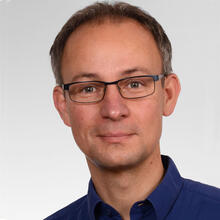
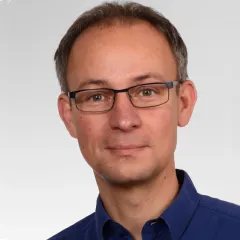
Biography:
Dr.-Ing. Thomas Rosenlöcher studied mechanical engineering at the Technische Universität Dresden, specializing in drive technology, graduating as a graduate engineer in December 2004. During his studies, Thomas worked for more than one and a half years at the BMW Group in Munich and Rosslyn in South Africa in the field of drive technology for motorbikes and motor vehicles.
After his diploma thesis, he became a research assistant at the Chair of Machine Elements. He worked there on the analysis of dynamic drivetrain behaviour for multi-megawatt drivetrains using the multibody system and the finite element method.
In June 2012, Thomas obtained his Ph.D. with the thesis on "Analysis of the Dynamic Drive Train Behaviour of Multi-Megawatt Drive Trains using the Multibody System and Finite Element Method." Since 2014, he has been a Chief Engineer at the Chair of Machine Elements, being involved in teaching and the research area of design and dimensioning of large drives with particular attention to system dynamics.
Title: Simulation of Loads in the Drive Train of Wind Turbines using Simpack
Abstract:
The extensive requirements for the reliable operation of wind turbines make the design and the dimensioning of wind turbine gearboxes an interdisciplinary challenge. In the meantime, the possibilities of the dynamic simulation are already in use in an early stage of the development process. The natural frequencies can be determined and compared to possible excitations through simulation models. The simulation of the operation of the wind turbine under different wind speeds allows the calculation of component loads as a basis for the further design process. The presentation concentrates on the challenges of dimensioning and the design of gearboxes for wind turbines and the associated dynamic properties of the complete system on the example of NREL's 5 MW reference wind turbine. The available simulation model is used to determine the influence of the model's level of detail on the resulting loads for the bearings and the occurring load distribution in the gearing of the first planetary gear stage. The available results offer improved possibilities to design drivetrain components and understand dynamic effects during the operation.
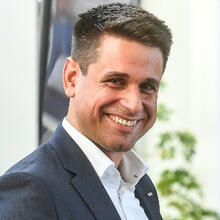
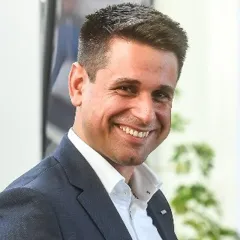
Biography:
Benjamin Abert is currently Head of Consulting and Service at FVA GmbH. In this role, Benjamin supports customers in using the FVA Workbench, prioritizes customer requirements, and passes the requirements on to software development for implementation.
Benjamin started his career at FVA GmbH as a Calculation Engineer for plain and rolling bearings with a Master of Science degree from the Technical University of Clausthal. Academically, Benjamin worked on the simulation of hydrodynamic contacts.
Title: REXS – The Standardized Interface for the Simple Exchange of Gearbox Data
Abstract:
Many modern transmission development tasks are digitized using simulation tools, which leads to building models in various tools across many development stages. These models all have in common that they operate with the same data, such as the number of teeth, center distance, etc.
The individual simulations' optimization must also be considered in the other simulation models, resulting in an enormous effort to synchronize model data. The time spent on data transfer increases with the number of tools used and risks data transfer errors or running simulations with outdated data.
The Reusable Engineering EXchange Standard (REXS), a parametric data model that enables all involved tools to export and read transmission model data, offers a solution to this problem. Eliminating the model structure of the individual tools prevents mistakes during data transfer and simplifies model management.
REXS is developed and maintained by the Research Association for Drive Technology under an open-source license.

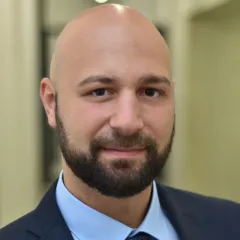
Biography:
Martin CARDAUN studied Mechanical Engineering, focusing on power engineering, at the RWTH Aachen University from 2010 to 2016. In 2016 Martin switched to the master's program of Power Engineering, specializing in regenerative energy technologies. Martin graduated in 2018 successfully with an M.Sc.
Since June 2018, Martin has worked as a research assistant at the Chair for Wind Power Drives at the RWT Aachen. His primary focus is on the MBS simulation analysis of gearless wind turbines' overall dynamics and acoustics. Since 2020, Martin has been the Team Lead of the Plant Design at the Chair for Wind Power Drives group.
Title: Wind Turbine Load Calculations with Nonlinear Flexible Rotor Blades
Abstract:
The trend towards increasing the power output of modern wind turbines leads to higher towers and longer rotor blades, resulting in more flexible structures. As these components increase in size, nonlinear structural behavior becomes increasingly important.
Therefore, accurate multi-body simulation models that consider nonlinear effects are needed. This presentation will present the workflow and usage of a new Simpack functionality for nonlinear model order reduction. With an exemplary rotor blade model, several tests will be done for both static and dynamic load cases as well as complete system simulations. It will be shown that nonlinear flexible bodies in Simpack agree with comparative calculations in finite elements software.
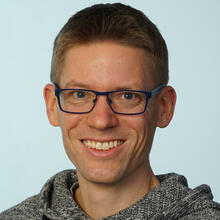
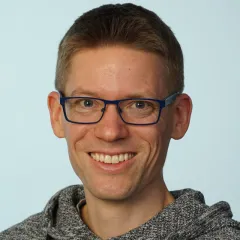
Biography:
Martin SCHULZE's passion for simulation technology started to grow while doing his Ph.D. in Plasma Technology at the Ruhr-University of Bochum, Germany.
Martin then changed his career and moved from the academic sector to working in the industry as a team member of a simulation group of Infineon/Qimonda, a highly regarded group for solving various challenges of semiconductor circuitry design, material design, and manufacturing processes on micro-and down-to-nano-scale. There, Martin deepened his knowledge in CAE and simulation methodologies.
In 2011, Martin joined SIMPACK AG’s Flexible Body team as an R&D member. With the acquisition of the SIMPACK AG by Dassault Systèmes in 2016, he carried on in this field. By now, he is one of the main actors in the development of new methodologies for simulating flexible bodies for all different kinds of use cases, like Nonlinear SIMBEAM, FlexTrack, Nonlinear Flexible, and co-simulation with FE.
Title: Wind Turbine Load Calculations with Nonlinear Flexible Rotor Blades
Abstract:
The trend towards increasing the power output of modern wind turbines leads to higher towers and longer rotor blades, resulting in more flexible structures. As these components increase in size, nonlinear structural behaviour becomes increasingly important.
Therefore, accurate multi-body simulation models that consider nonlinear effects are needed. This presentation will present the workflow and usage of new Simpack functionality for nonlinear model order reduction. With an exemplary rotor blade model, several tests will be done for both static and dynamic load cases as well as complete system simulations. It will be shown that nonlinear flexible bodies in Simpack agree with comparative calculations in finite element software.
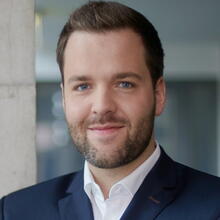

Biography:
Johannes UNGLERT earned his Ph.D. in Industrial Engineering for developing new approaches to support production engineers in the design and management of production and logistics systems. As a management consultant, Johannes continued following his interest in the digital transformation of factories & industry 4.0 before joining Dassault Systèmes as Industry Process Consultant in 2020. Throughout the years, Johannes supported manufacturing companies from various industries in improving their production & logistics operations.
Title: From Engineering to Manufacturing
Abstract:
Next to the development of complex systems, also the manufacturing processes need to be well-planned and eventually executed. These steps imply a change from a product-centric to a process-centric view and come with various challenges. This session will point out critical capabilities for mastering production and logistics, highlighting the benefits of solutions that provide continuity between system development and manufacturing.

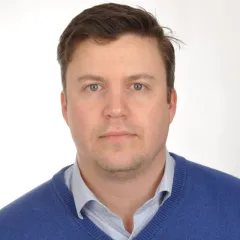
Biography:
Claus B.W. PEDERSEN is a Technology Director for the Multiphysics/Multidiscipline domain — Structures Science & Technology of R&D SIMULIA, Dassault Systèmes. Claus examines the technology of new optimization methodologies, coding of CAE, and worldwide presale. His role is highly interdisciplinary, working with different teams and organizations involving crossover brand activities from R&D to presale on the latest technology and corporations with leading international universities.
Since receiving his Ph.D. at the Technical University of Denmark in 2002, he has kept his connection to applied science and research. Following this, he worked for the next two years as a Research Associate at Cambridge University, UK.
Claus has worked in the field of optimization for 20 years. He has focused on industrial optimization, developing solutions and apps for function-driven generative design and digital continuity on the 3DEXPERIENCE® Platform, non-linear adjoint solver technology in the Abaqus framework, and other Multiphysics solvers, traditional and additive manufacturing constraints. Working daily with technologies in industrial design workflows applying to many sectors, i.e., aerospace, transportation, renewable energy, high tech, life sciences, and construction, Claus has also specialized in structural optimization solutions for wind turbine components.
Title: Efficient Structural Wind Turbine Designing using Topology, Sizing and Shape Optimization
Abstract:
The present work addresses the challenging topic of methodical obtaining new conceptual designs for structural wind turbine components and improving the existing structural designs of wind turbines.
Typically, topology optimization is applied in the early design phase, where the optimization targets minimize mass considering stiffness, strength, and manufacturing requirements. Topology optimization provides the ability to make early decisions in the mechanical design cycles and reduce costs.
Sheet thickness sizing of non-linear optimization is applied to maximize buckling and post-buckling loading capacity and at the same time minimize mass subject to strength and linear modal eigenfrequency requirements.
For shape optimization, the CAE mesh is adapted where the objective is to minimize the stress or minimize the damage and thereby maximize the safety factors.
Lastly, we address one of the main obstacles in embedding non-parametric optimization methods in the product design process: the lack of efficient CAD- reconstruction methods. To the author’s knowledge, this is the first dedicated workbench for CAD-reconstructed of non-parametric optimization results. Additionally, the process is integrated on the 3DEXPERIENCE platform allowing a complete associated design workflow.

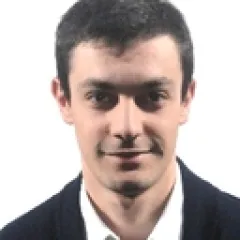
Biography:
Bertrand LACOSTE-BOURGEACQ joined the Dassault Systèmes brand CATIA R&D organization for Systems Engineering Solutions as a Mechanical Engineer seven years ago.
Since then, Bertrand has occupied different positions, i.e., becoming part of the Industrial Equipment Industry Solution team as a Technical Consultant for modeling and simulation solutions and then taking on the management position of the Industrial Equipment Offer Portfolio and Technical team.
Bertrand is passionate about transformation and innovation, but most importantly, dedicated to serving industrial equipment manufacturers in their journey to success.
Title: Digital Thread for Wind Power Equipment with the 3DEXPERIENCE Platform
Abstract:
As wind turbine manufacturers ramp up production in saturated markets, the need for geographic expansion becomes inevitable. Thus, they must ensure that their production strategies deliver on quality and cost goals throughout a wind turbine’s 20-year operational lifecycle.
Even though the wind energy industry is rising, it is essential to focus on innovation to compete with other energy supply markets. Increasing economies of scale, more competitive supply chains, and further technological advances will continue to reduce wind power costs.
To ensure continued growth and profitability, the industry needs to transform its working methods and prioritize adopting new technologies to support its manufacturing and planning needs.
In this session/presentation, we show best practices from different industries and explain how players in the wind power industry can benefit from well-defined processes seamlessly supported by our digital solutions and portfolio.
Learn how the various disciplines can collaborate efficiently and effectively based on a single source of truth on our 3DEXPERIENCE platform.
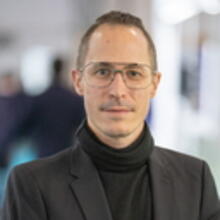
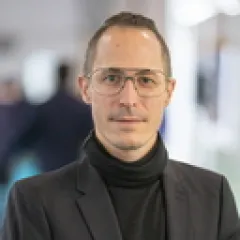
Biography:
Jean-Yves's 16 years of experience in industry sales is focused primarily on the industrial equipment industry. Since 2012, he has driven business development for Renewables, and Power & Fluidic Equipment sectors. Together with the local teams, Jean-Yves defines and executes go-to-market strategies for OEM, engineering offices, and EPC.
Title: Digital Thread for Wind Power Equipment with the 3DEXPERIENCE Platform
Abstract:
As wind turbine manufacturers ramp up production in saturated markets, the need for geographic expansion becomes inevitable. Thus, they must ensure that their production strategies deliver on quality and cost goals throughout a wind turbine’s 20-year operational lifecycle.
Even though the wind energy industry is rising, it is essential to focus on innovation to compete with other energy supply markets. Increasing economies of scale, more competitive supply chains, and further technological advances will continue to reduce wind power costs.
To ensure continued growth and profitability, the industry needs to transform its working methods and prioritize adopting new technologies to support its manufacturing and planning needs.
In this session/presentation, we show best practices from different industries and explain how players in the wind power industry can benefit from well-defined processes seamlessly supported by our digital solutions and portfolio.
Learn how the various disciplines can collaborate efficiently and effectively based on a single source of truth on our 3DEXPERIENCE platform.

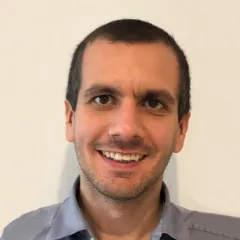
Biography:
Dan ILEA is an Industry Process Consultant Senior Manager with Dassault Systèmes, working in the SIMULIA Electromagnetics group. He has received his Ph.D. in the design and optimization of electrical machines from the Ecole Centrale de Lille, France, in 2011. Dan has since worked in various positions as part of the applications team for the finite element electromagnetic software Opera FEA.
Dan is continuously working with technology customers and partners to create and enable new workflows responding to the need for integrated modeling and simulation processes.
Title: Considerations for Accurate Calculation of Electromagnetic Forces in Electric Generators
Abstract:
The effects due to the electromagnetic forces and torques in an electrical generator are important considerations during the design stage of a wind turbine. The large diameters of such generators, coupled with the ever-smaller cross-section of airgap between the stationary and rotating parts of the generator, means that the interactions between the electromagnetic fields and the rest of the drivetrain need to be very well understood to avoid unexpected behaviors.
The harmonic content of these electromagnetic forces is the main cause of vibration and noise produced by the electrical generator. These forces, however, are further coupled with forces external to the generator, propagated through the drivetrain, leading to coupled effects, for which in-depth multi-physics simulation is required.
The Finite Element method is best suited for the simulation and characterization of these electric generators. However, accurate calculation of the electromagnetic forces can be challenging due to the derivations required in the magnetic field solution. The mesh topology and refinement will play a role in the precision with which these forces can be computed. Even so, the potential for numerical effects introduced by the mesh discretization can reduce the precision with which these forces are calculated.
In this presentation, we will look at the electromagnetic offering from SIMULIA and the specific capabilities that allow the accurate calculation of electromagnetic fields and forces inside electric generators. We will then look at the techniques we have implemented in order to remove the numerical effects due to the discretization when calculating electromagnetic forces for use in a multi-physics analysis.
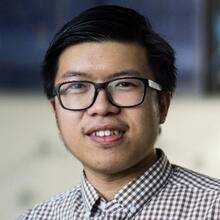
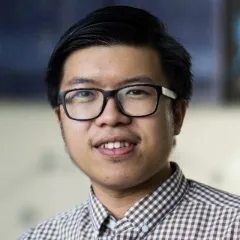
Biography:
Christopher Teruna has recently obtained his doctorate in aeroacoustics from the Delft University of Technology. While pursuing his Ph.D., he has carried out numerous computational studies using the Lattice-Boltzmann solver, Dassault Systèmes SIMULIA PowerFLOW.
Christopher's research focused on applying permeable materials to reduce turbulence-induced noise, which affects many aerodynamic systems from aircraft engines to wind turbines.
Title: Numerical Studies of Trailing-Edge Noise Reduction with Porous Materials
Abstract:
This presentation demonstrates the usage of a Lattice-Boltzmann solver to study the noise mitigation mechanisms in the application of a permeable trailing edge. The study employs a NACA 0018 airfoil installed at zero angle-of-attack. The permeable trailing edge has been modeled in the simulation as an equivalent fluid region where Darcy's law applies. Due to the limitation of Darcy's law at regions with small thicknesses, an alternative multi-layer modeling approach has been proposed and validated. Subsequently, this approach examines the behaviors of turbulent pressure fluctuations nearby and inside the permeable trailing edge.
It is found that the interaction between pressure fluctuations on both sides of the trailing edge weakens the impedance discontinuity at the trailing edge, which is eventually responsible for the noise reduction.
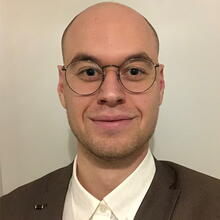
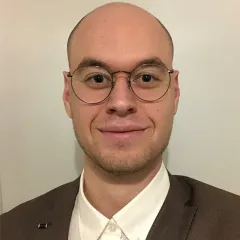
Biography:
Louis Pierre Tepper, born in Heilbronn, Germany, has already been since his childhood passionate about technology.
After graduating from high school in Stuttgart, he started studying Mechanical Engineering at the University of Stuttgart. Between his bachelor's and master's studies, Louis completed an internship at BMW in Madrid in electric mobility and hybrid models.
In his master's program, which is currently underway, he specialized in electrical machines and drives and control engineering. Since the field of renewable energies fascinated him during his studies, he is currently writing his master's thesis at the Stuttgart Chair of Wind Energy on this topic: Feasibility Study for Joint Mooring of Floating Offshore Wind Turbines.
Title: Feasibility Study of Shared Mooring for Floating Offshore Wind Turbines
Abstract:
This paper aims to evaluate the feasibility of the new concept of shared mooring lines in order to achieve potential cost savings by reducing anchors and installation costs.
The whole model consisting of floater, turbine, and mooring line is created in Simpack, where the mooring line is represented by mass points that are connected to each other by parallel spring-damper force elements. The mooring lines are connected to a semisubmersible floater, supporting a 15 MW turbine. The aerodynamic and hydrodynamic forces for this Floating offshore wind turbine (FOWT) are computed by Aerodyn and Hydrodyn, interfaced with SIMPACK. This FOWT is simulated individually with different wind speeds and wave heights. We generate the forces on the mooring lines and the movement data of the turbines. In order to simulate a shared mooring line connecting both turbines, two simple floater models are added with the real data from the individual simulations as identically as possible, using force elements to integrate the aerodynamic and hydrodynamic forces as input functions. The forces on the shared mooring line can be compared with those of the single simulations, and a conclusion can be made.
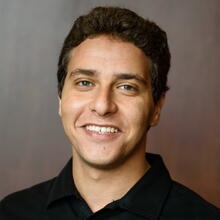

Biography:
Abdelrahman Amin joined the Mechanical Engineering Department as a Ph.D. student and a Graduate Research Assistant in January 2020. He received his B.Sc. from the American University in Cairo (AUC) in 2014.
Abdelrahman then spent the next three years working as a Design Release Engineer at General Motors, Egypt. He joined the Automotive Engineering Department at Clemson University in 2017, where he received his M.Sc. in 2019 with a focus on vehicle dynamics and noise, vibration, and harshness.
His Ph.D. research is directed towards vibration-based condition monitoring in the wind turbine gearbox.
Title: Vibration-Based Fault Detection in Wind Turbine Gearbox
Abstract:
A significantly increased production of wind energy offers a path to achieve the goals of green energy policies in the United States and other countries. However, failures in wind turbines, specifically their gearboxes, are higher due to their operation in unpredictable wind conditions resulting in downtime and losses. Improved and early detection of faults in wind turbines will significantly increase their reliability and commercial feasibility. Because of their powerful feature learning capacity, data-driven fault diagnosis techniques based on deep learning have recently gained increased attention. However, one of the critical challenges is performing this diagnosis on wind turbines that inherently run under time-varying operating conditions. Other signal components that are not of interest and high noise levels mask the signal components or signature generated by incipient damage. This presentation proposes a deep learning-based fault diagnosis method based on bivariate cyclic spectral coherence and cartogram images to improve the recognition performance of wind turbine gearbox faults. Thus, these two types of 2D map representations are used to train convolutional neural networks.


Wouter holds a PhD in aerospace engineering and has been working on modeling and simulation topics for over 10 years at Dassault Systemes. He is an senior industry expert and responsible currently for the simulation portfolio, go-to-market material and strategy for the renewables, marine and offshore industry.
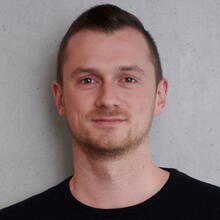
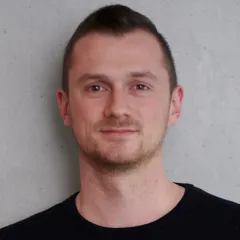
Biography:
Victor Stadler studied mechanical engineering at the University of Stuttgart, Germany, focusing on production and logistics, and obtained his master's degree in 2018.
Victor then worked as a consultant for digitization projects before joining Dassault in 2021 as an Industrial Process Consultant. Victor supports companies with technical questions about managing manufacturing tasks with the 3DExperience platform.
Title: From Engineering to Manufacturing
Abstract:
Next to the development of complex systems, also the manufacturing processes need to be well-planned and eventually executed. These steps imply a change from a product-centric to a process-centric view and come with various challenges. This session will point out critical capabilities for mastering production and logistics, highlighting the benefits of solutions that provide continuity between system development and manufacturing.
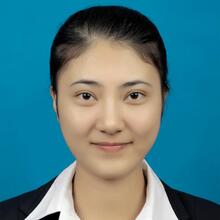
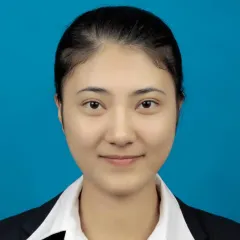
Biography:
Wang Shuang, 2nd Doctor of Chongqing University, is currently majoring in Mechanical Engineering at the College of Mechanical and Vehicle Engineering, Chongqing University.
Wang’s research targets the digital design of key components of large wind turbine units, including parametric pitch design, yaw bearing systems, and the dynamic analysis of drive chains.
Over the past two years, she has taken charge of precise dynamic modeling and structural vibration control of wind turbines.
Title: Dynamic Response and Structural Vibration Control of Offshore Wind Turbines Subjected to Multiple Excitations
Abstract:
In order to simulate the performance of wind turbines with high precision, an aero-hydro-elastic-control coupling simulation model of the offshore wind turbine under wind-wave-seismic excitations is established based on the multibody dynamics model, which includes blades, towers, and drivetrains. Using Simpack, the model is combined with the seismic excitation model, hydrodynamics, aerodynamics, and the pitch-torque control system.
Because of the wind shear effect and the output power fluctuation caused by the change of wind speed and the unknown disturbance of the system, a variable speed pitch control strategy based on active disturbance rejection is adopted to suppress the output power fluctuation.
The control model is established through MATLAB/Simulink, which can effectively suppress system vibration and reduce the imbalances of yaw and pitch moments.
In addition, the wind turbine dynamic model is then coupled with TMD system to carry out the response analysis of the wind turbine under wind-wave excitations with TMD control under multiple operating conditions.
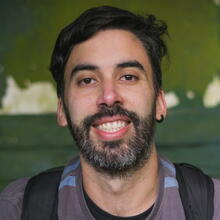
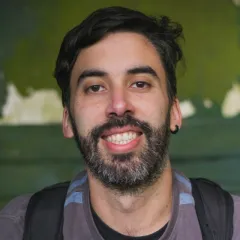
Biography:
Eladio Hurtado is a final year Ph.D. student of the Department of Mechanical Engineering at the University of Sheffield. In his research project, Eladio looks at wear mechanisms on wind turbine pitch bearings using a mixed approach of experimental and modeling methods.
Before starting his Ph.D., Eladio worked for eight years as a mechanical engineer, performing finite element analysis for a wide variety of industrial applications.
Title: Effect of Supporting Structure Flexibility on the Load Distribution of a Wind Turbine Pitch Bearing
Abstract:
Pitch bearing connects the blades to the hub, allowing the rotation of the blades to control the loads and power in wind turbines. These bearings are affected by different damage modes such as edge loading, core crushing, rotational wear, false Brinelling, and fretting corrosion. One of the relevant factors related to these damage modes is the load distribution among the rolling elements.
Uneven load distribution is a common feature of pitch bearings, as they are mounted on highly flexible structures (hub and blades). The effect of the bearing’s supporting structures on the load distribution has been largely studied; yet little evidence exists on the impact that modifying the flexibility of these components has on the bearing load distribution.
This work presents a load distribution analysis for a 2-meter diameter ball bearing using a finite element model of the assembly between the bearings, the blades, and the hub. Different assembly stiffness configurations are defined and compared by defining indexes to quantify the uniformity of the load distribution. It is concluded that increasing the radial stiffness of the hub produces the best results to effectively improve the load distribution among the rolling elements, resulting in the maximum contact load reduced by 20% for the studied bearing.
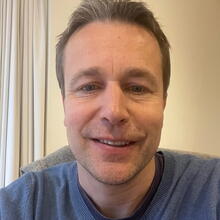

Biography:
Koen Boorsma is a Researcher at TNO, Netherlands. TNO connects people and knowledge to create innovations that boost the competitive strength of industry and the well-being of society in a sustainable way.
Koen's field of research focuses on numerical modeling and experimental analysis related to wind turbines, precisely field and wind tunnels.
Since 2008 he has developed unsteady aerodynamics and acoustic solvers to analyze wind turbines. In 2014 Koen coordinated the New Mexico experiment: A fully instrumented wind turbine model was tested in the largest wind tunnel of Europe, resulting in a database used worldwide in the wind energy community for model validation.
Koen has been active as a coordinator and contributor to international projects (IEA Task 29 and 47), EU projects (e.g., EU AVATAR, INNWIND, IRPWind), national research projects, and as an industry consultant.
Koen has worked as a reviewer for several international journals, conferences, and national and international project proposals. Further, Koen has been an advisor to Master and Ph.D. students.
Title: Challenges in Dynamic Modeling of Future Wind Energy Systems
Abstract:
A growing demand for clean energy has pushed further development of wind energy concepts. Conventional horizontal axis wind turbines (HAWTs) have grown taller with large and flexible blades. Offshore wind energy has been given a boost, where floating concepts are starting to make their way into the market. In the light of the above-mentioned developments, vertical axis wind turbines (VAWTs) have received renewed interest due to their low center of gravity combined with a good upscaling perspective.
All of the mentioned developments involve challenges in their dynamic modeling. Low computational cost methods are necessary to resolve the dynamic load envelope to perform fast design iterations but with sufficient accuracy. Some of the modeling efforts at TNO to progress these challenges are highlighted in the current presentation.
Validation of rotor aerodynamic models for HAWTs using a field aerodynamic database with detailed measurements is highlighted. A novel implementation of the blade element momentum (BEM) method to account for floater motions is illustrated. Lastly, aero-elastic modeling of a vertical axis wind turbine concept is under investigation.


Biography:
Gregor Höpfner, M.Sc., started in 2012 as a student at RWTH Aachen University.
After completing his Master's Degree program "Development and Construction" in 2018, Gregor started to work in February of the same year as a Research Assistant in the Department of Systems Engineering — Modelling and Simulation. Since 2020 Gregor is now the Team Leader of the department group System Modelling.
In his research, Gregor deals with developing a seamless, function-oriented product development process for mechatronic systems. He focuses on integrating complex simulation models and methods into functional system models to allow early-stage design verification, using Model-Based Systems Engineering methods on parameter level. For this purpose, Gregor develops structured model libraries linking the Systems Modeling Language SysML with simulation tools and models automated simulation processes within these libraries.
Title: Towards Linking Multi-Body Simulation and Model-Based Systems Engineering: Automated Parameter Updating and Model Structuring using Simpack and Cameo Systems Modeler/SysML
Abstract:
Reduced time to market, rising system complexity and costly test procedures increase the need for virtual testing upfront validation. Therefore, complex systems are described in various models. Creating such models and keeping data consistent is effortful. Model-Based Systems Engineering (MBSE) is a method to manage system complexity and information by linking data in product development from requirements to the models that describe the solution space of a system. MBSE system models describe a system in a formal language, e.g., SysML. Simulation models can be (semi-)automatically integrated into SysML to test requirement fulfillment. We show an approach on how to link SysML system models in Cameo Systems Modeler with Multi-Body Simulation (MBS) models in Simpack using the example of a Wind Turbine. A SysML model is presented describing the Wind Turbine. An MBS model is linked to this SysML model, and it is demonstrated how parameters in MBS are automatically updated from the SysML. Additional models from other tools are integrated, creating executable virtual testing workflows making virtual testing repeatable. Thereby, modeling effort is reduced, and data consistency is ensured.
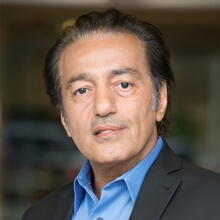
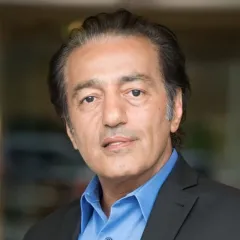
Biography:
Reza SADEGHI has over 20 years of experience in executive management, portfolio planning, R&D, mergers, and acquisitions. He has deep knowledge of both discrete and formulated industries. As chief strategy officer, Reza is responsible for BIOVIA’s portfolio and strategy at Dassault Systèmes, as well as BIOVIA’s contract research. After beginning his career in R&D for Aerospace and Defense, Reza moved on to an executive role at a Palo Alto startup (MARC Analysis Research Corporation) and later with MSC Software, both of which are developers of scientific software with a focus on physics-based modeling and simulation. As chief technology officer at MSC Software, Reza was responsible for product strategy and R&D. He is a regular speaker at several international life and material science events and holds a number of advisory board positions.
Reza lives in La Jolla, Ca. He retains an adjunct faculty status at UCSD and SDSU graduate schools of engineering.
Title: Generative Materials Design Leveraging AI and Materials Informatics
Abstract:
Materials Informatics plays a key role in accelerating data-driven materials and chemicals development and optimization. We combine smart materials data infrastructure and AI to accelerate the development of cutting-edge materials and formulations, facilitating design optimization and enabling its reuse.
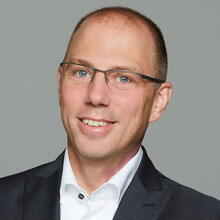
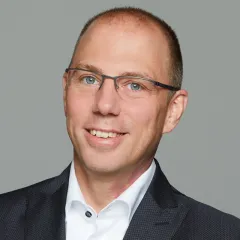
Biography:
Florian Jurecka studied Civil Engineering in Karlsruhe and graduated with a doctorate in Computer-Aided Engineering at the Technical University of Munich. Following this, he joined the start-up company FE-Design and became part of the management team.
After a part-time MBA in Innovation and Leadership at the Technical University of Munich and the acquisition of FE-Design by Dassault Systèmes in 2013, Florian held various senior management positions within the company.
In 2020, Florian was appointed to join the Executive Management team of Dassault Systèmes’ EuroCentral team.
Since 2021 Florian co-leads the Dassault Systèmes simulation division as Vice-President SIMULIA, now heading the worldwide R&D and Strategy organization.